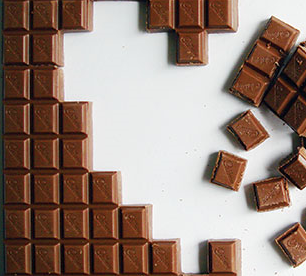Can you Redesign a Chocolate Bar?

Over on designmind, David Sherwin, author of the upcoming book Creative Workshop, is sharing some of the design challenges from his book on his blog. Some of these are really fun and provocative.
This week’s challenge:
Choose a product you use as part of your day-to-day life—food, drink, paper products, etc.—and redesign or repackage it so that consumers will want to use less of it.
How can you use your design skills to make more out of less and encourage people to use that reduced quantity in a more mindful manner?
There are some photos of what a redesigned chocolate bar might look like.
According to David, this challenge was inspired by designer Tithi Kutchamuch, who said “I buy Twix Extra because it’s only ten pence more expensive… I finish it in one go, and feel guilty for the rest of the day… Bargain food persuades people by playing with the value of money, which has brought a lot of problems to society: over nutrition, eating disorders, obesity, illness, guilt, wasting food, wasting resources, over production, etc. Can design make people buy food that offers less?”

Awesome challenge! Someone, please redesign toilet paper, laundry detergent, bar soap/body wash, paper towels and salt for me.
Anna: Hey – I just post the challenges, I don’t solve them :)
Those 8oz, 100-calorie Coke cans are the first example that comes to mind. Just make sure you don’t drink two, or you would’ve been better off with the 12oz can. ;)
hi anna, your answer to toilet roll redesign is found in Designing Design Directed by Kenya Hara; the clunking sound caused by the square core reminds us of not over using…
http://www.ndc.co.jp/hara/home_e/re_design/index.html
hi anna, your answer to redesigning toilet roll is found at Designing Design, Directed by Kenya Hara; the clunking sound create as we yank at the paper reminds us not to over use…
http://www.ndc.co.jp/hara/home_e/re_design/index.html
Hi Anna–
It’s funny you mentioned toilet paper—there is a solution in Creative Workshop around toilet paper that helps to minimize the amount used. It was created by Katie Greff, a designer in Seattle, WA. :)
I do love the Kenya Hara book as well, and his solution too!
Best, David